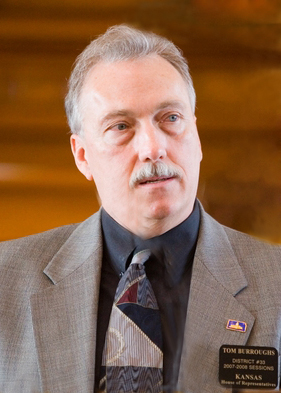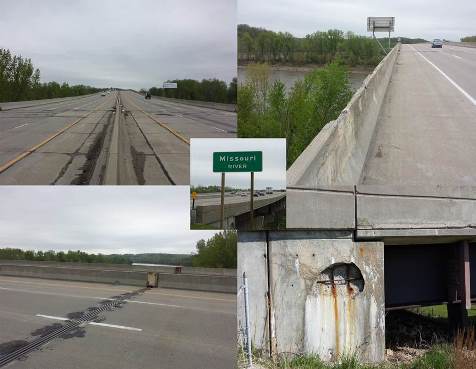Majority vote remains elusive amid ‘no tax’ pledges, opposition to 2012 income tax cuts
by Andy Marso, KHI News Service
Editor’s note: A fractured Kansas Legislature is working overtime to produce a balanced state budget for the fiscal year that begins July 1. This story attempts to explain the reasons lawmakers are on the brink of a constitutional crisis. The KHI News Service will continue to monitor events and update them as necessary.
The Senate’s failure to pass a tax bill Wednesday, on the 97th day of session, coupled with the House’s failure last week underscore the difficulty of ending the 2015 session.
Both chambers know there’s a projected deficit of $406 million between what the state is expected to take in and what it’s likely to spend in the fiscal year that begins July 1. Both chambers know they can’t legally adjourn until they’ve closed that gap and passed the budget.
Both chambers know that time is running out for them to get a budget passed without serious consequences, including state employee furloughs and a partial government shutdown.
But a deal remains elusive, even as the clock ticks down.
A matter of math
The House is set to try another tax plan Friday — one that mixes relatively small increases of several different taxes to close the hole. But the path to passage for any tax plan is rocky, and it’s a simple matter of math.
Any plan needs a majority vote in the 40-member Senate and the 125-member House, which is difficult because:
• A significant number of the members of both chambers are hardline anti-tax Republicans who will support no tax increase at all. Rep. Pete DeGraaf, a Republican from Mulvane, counts himself among that group. DeGraaf patted a red pen in his breast pocket Wednesday and said that he and other like-minded House members are calling themselves the “Red Pen Brigade.”
“We’d rather cut (budgets) than raise taxes,” DeGraaf said.
Some members of this group have signed “no-tax” pledges with special interest groups. Others are bound only by their ideology, which might actually be a stronger deterrent to voting for a tax increase. About 25 House members and six senators, give or take, fall into this camp.
• About an equal number of Democrats — all that are in the Legislature — are unlikely to vote for any plan the Republicans bring to the floor. Democrats have said they are “ready to lead” on taxes and budget but have not offered any bills to close the fiscal gap. Their leadership appears contingent on Gov. Sam Brownback and other Republicans saying that the 2012 income tax plan was a mistake in the first place.
“The governor’s tax plan that he implemented is a failure,” House Minority Leader Tom Burroughs, D-33rd Dist., said. “The one we had in place prior to that had worked.”

When asked if that meant Democrats would vote for a repeal of the 2012 tax plan, which dropped individual income tax rates as well as exempting an estimated 333,000 businesses, Burroughs hedged.
“I’m not saying full repeal,” he said. “I’m just saying a fair and equitable tax plan, one that shares the load across the entire state.”
When asked what that would look like, Burroughs said it would be “reminiscent to what we had in place” before 2012.
But it’s unlikely that Brownback and the Republican-led Legislature will offer such a plan, meaning Democrats aren’t likely to vote for any tax plan that comes to the floor.
Combine the House and Senate Democrats with those House and Senate Republicans who will accept no tax increases and that adds up to about 53 House members and 14 senators.
• The math is already tight at that point. What’s left are about 72 House Republicans and 26 Senate Republicans who might be open to some sort of tax plan if it will end the session and keep government running. Republican leaders have tried to find a mix of tax increases that will appeal to nearly all those members, with only a nine-vote cushion in the House and a five-vote cushion in the Senate. The House will try again Friday. But there’s a major rift within those blocs of Republicans.
• Some Republicans who are willing to raise overall tax revenue are not willing to touch income taxes. This “if-you-must-raise-taxes-make-it-sales-tax” mentality tracks with the philosophy of one of the state’s most influential lobbying groups: the Kansas Chamber of Commerce. “That’s our position,” said Eric Stafford, the Chamber’s lobbyist. Brownback fits best in this camp as well, raising the possibility of a veto if the Legislature were to pass any bill that interferes with his stated goal of moving the state to zero income tax.
• Some Republicans considered more moderate were alienated by Brownback, the Chamber and other advocates of the 2012 income tax plan in previous elections. After Brownback and groups supporting his tax plan campaigned for challengers in past Republican primaries, the surviving moderates who opposed the plan have little incentive to fall in line with what the governor and the Chamber want. While perhaps not as insistent on rolling back the 2012 income tax plan as the Democrats, these Republicans are likely to hold out for at least some new income tax to be part of any tax increase plan.
So how does this end?
• Reopen budget talks and cut $400 million to $450 million from the proposed state budget. There is certainly some appetite for this among Republicans, but no one who wants to go this route seems willing to be specific about what to cut.
“That’s the challenge of the hour, isn’t it?” DeGraaf said.
K-12 public education is now set in block grants that are not supposed to be reduced. Kansas already has some of the tightest Medicaid eligibility in the country and is locked into contracts with three private insurance companies to administer services to those who are eligible.
Lawmakers have stretched out state pension fund payments by passing a $1 billion bond bill, and any cuts to public employee pensions for those already vested would likely become embroiled in court battles.
Those are the three major cost drivers in state government.
Executive branch agencies and higher education have seen their funding cut in recent years, and hundreds of millions of dollars have been shifted from the Kansas Department of Transportation’s highway fund to shore up the general fund.
In fact, the current $406 million deficit relies on passage of a budget bill that shifts from the highway fund and other sources. If that doesn’t pass, legislators will need to find about $800 million, because that is the structural deficit between how much revenue Kansas is projected to take in and how much it is spending this year.
Anti-tax groups are weighing in with some suggestions for slicing budgets.
The American Legislative Exchange Council, a nonprofit that brings together state legislators and corporate lobbyists, sent Kansas lawmakers a note suggesting they cut state jobs that have been vacant for six months or more.
But Rep. Ron Ryckman Jr., the House’s top budget negotiator, warned House Republicans two weeks ago that a significant chunk of the state’s vacant positions now are in state hospitals and they’re vacant not because they’re not needed, but because the state can’t find enough qualified candidates at the current salary.
Existing employees are being forced to put in lots of overtime, which costs the state more. The current budget deficit is almost 7 percent of the entire state general fund, so attempting to close it with cuts would have an impact.
• Leave the budget as is and continue trying to find the right mix of sales and income taxes. The governor’s office has warned that if a budget agreement is not reached in the first week of June, it will be difficult to make payroll for the beginning of the next fiscal year. If sales tax changes are to go into effect July 1, legislators also need to give retailers about a month’s notice. The hope here would be that as the situation becomes more dire, enough legislators will shift from their hardline positions and support a mixed tax plan that includes some new sales tax, some new income tax and some revenue from specialty taxes like tobacco and gasoline.
“It’s going to be finding the will of people to compromise around issues they feel strongly about,” said Rep. Russell Jennings, a Republican from Lakin who has cautioned colleagues against further cuts to state prisons and hospitals.
• If legislators don’t come to the middle on taxes, then one side will have to come to the other. That could mean that, once things get dire enough, the moderate Republicans blink and agree to filling the hole by increasing the state sales tax by 1 cent. Or it could mean that legislators who support the 2012 income tax plan would agree to repeal it. The latter is less likely. Even if dozens of Republicans flipped their support for the 2012 plan and repealed it, Brownback would have the power to veto the repeal.
That’s the lay of the land. The clock is ticking, and no one seems to know what kind of tax and budget plan eventually will solve the tricky math.
“I couldn’t even begin to guess,” Jennings said.
The nonprofit KHI News Service is an editorially independent initiative of the Kansas Health Institute and a partner in the Heartland Health Monitor reporting collaboration. All stories and photos may be republished at no cost with proper attribution and a link back to KHI.org when a story is reposted online.
– See more at http://www.khi.org/news/article/why-the-legislature-is-struggling-to-pass-a-tax-plan#sthash.aZBoNICp.dpuf

